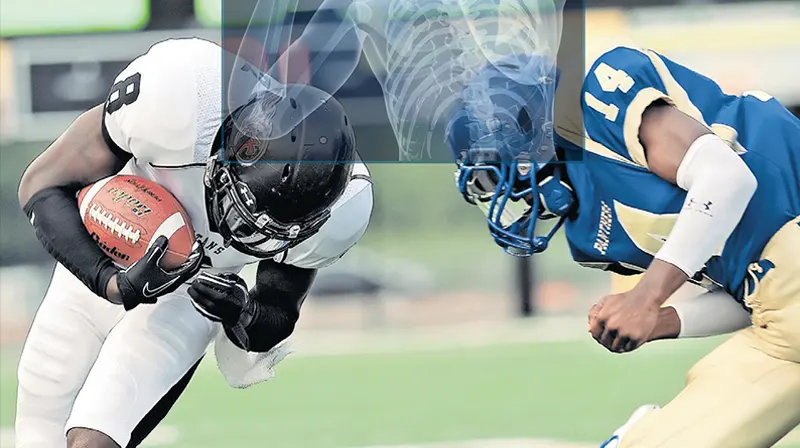Concussion: Young Athletes and Head Trauma
February, 2016
Cyrus Khorrami, MD
Radiologist, Medical Director

Approximately 3.8 million concussions occur annually in US sports. The media has recently begun paying more attention to the effects of repeated concussions suffered by professional athletes, particularly in the National Football League. These concerns have been highlighted by the lawsuit 2,000 former professional football players filed against the NFL, which claims the League withheld information related to the long-term effects of repeated head trauma. Repeated concussions can lead to traumatic brain injury (TBI), which has been linked to severe neurologic disorders, mental decline, anxiety, and depression—which can lead to suicide. Appropriately, there is increasing popular support for protecting our young athletes from such injuries.
Q. What is a concussion?
A. A concussion is a traumatic brain injury (TBI) which alters the way our brain functions. It is caused by a blow to the head or a blow to the body which causes the head and brain to violently move back and forth. The brain can swell, which can cause electrical and metabolic disruptions.
Q. How do I recognize a concussion?
A. Contrary to popular belief, most concussions occur without a loss of consciousness. Symptoms can be subtle. These include headache, nausea/vomiting, dizziness, blurred vision, confusion and feeling groggy. A coach or parent may notice the athlete moves clumsily, appears dazed, cannot concentrate or follow instructions, answers questions slowly, has personality changes, and cannot recall events prior to or after the injury.
Q. Why are concussions dangerous?
A. Most concussions are mild and result in full recovery. People who receive a concussion are more susceptible to having additional concussions. Many times it takes less force to have a second or third concussion. It is very important to let the brain heal fully. If an athlete returns to the sport too early and receives additional concussions, it can lead to serious long-term mental issues, irreversible brain damage, and possibly death.
Q. What should we do if a concussion is suspected?
A. Immediately remove the athlete from play. The athlete should promptly be evaluated by a health care professional, and they should abstain from play until they are symptom-free for at least one week. An athlete can feel better in less than one hour but just because they feel better does not mean they are better. Some symptoms can return in 2-5 days. Some institutions have their student athletes take a computer or written standardized test in the preseason. These tests examine neurocognitive function including memory, attention, brain processing speed, reaction time, and post-concussion symptoms. Returning to play may be considered once their scores return to their preseason baseline.
Q. What about imaging?
A. Imaging is an excellent way to detect injuries that may require immediate medical therapy or surgery. In the emergency setting, a CT of the brain is the best method to exclude a skull fracture or bleeding in the brain. An MRI of the brain is better for evaluating long-term effects of possible injury and evaluating an athlete who has prolonged concussion symptoms. Unfortunately, we cannot actually see a concussion on any modality nor can we see if a patient is fully recovered from a concussion. However, with advancing technology, exciting new imaging is being created that may be available to allow us to see how brain functionality is affected by mild trauma.